The time to take care of low back pain problems is before they occur. The
"ounce of prevention is worth a pound of cure" philosophy holds when
it comes to low back pain. By
using proper lifting techniques, maintaining the appropriate body
weight and
tone, keeping the back and body muscles strong, and keeping good posture, many
back injuries and episodes of low back pain could be avoided. The cost to employers each year, due to
low back pain problems alone, is in the order of several billion dollars.
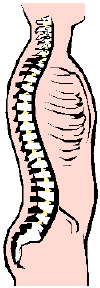
The spine has three curves. The cervical spine has a natural lordosis
(with the spine arched backwards). The thoracic spine, a natural
kyphosis (with the spine slightly flexed forward). And the lumbar
spine has a natural lordosis. These curves allow for the center of
gravity to be placed over ones feet. Disruption of one of these curves
places an undue strain upon the other curves.
Disruption of the curves can come from chronic poor posture, or from lifting
incorrectly. When lifting objects,
 it
is important to remember to bend with the knees and hips, thus allowing the legs
to do the work, taking stress off of the spine. To reduce the strain or
"torque" on the spine, hold the object as close to the body as possible.
Bending at the waist, keeping the legs straight at the knees, places a large
amount of strain on the spine, and in particular the low back. Don't do
this!! BEND AT THE KNEES. In addition, one should tighten the
abdominal muscles when lifting, taking more pressure off the low back. it
is important to remember to bend with the knees and hips, thus allowing the legs
to do the work, taking stress off of the spine. To reduce the strain or
"torque" on the spine, hold the object as close to the body as possible.
Bending at the waist, keeping the legs straight at the knees, places a large
amount of strain on the spine, and in particular the low back. Don't do
this!! BEND AT THE KNEES. In addition, one should tighten the
abdominal muscles when lifting, taking more pressure off the low back.
Proper Form
 Before taking on any new
exercise regimen, please, make sure you are using proper form. Improper
form, for stretching, strength training, and cardiovascular activities, could
mean tearing and injuring tendons, ligaments, and muscles. And the goal of
exercise is to strengthen you, not injure you. So USE GOOD and PROPER
FORM. Before taking on any new
exercise regimen, please, make sure you are using proper form. Improper
form, for stretching, strength training, and cardiovascular activities, could
mean tearing and injuring tendons, ligaments, and muscles. And the goal of
exercise is to strengthen you, not injure you. So USE GOOD and PROPER
FORM.
 Posture, Posture, Posture
(to prevent low back pain) Posture, Posture, Posture
(to prevent low back pain)
Avoid staying too long in any position which causes the natural curves of the
spine to be distorted. Change
positions often, whether sitting, standing or lying down. Sitting
can actually put a moderate amount of strain on the low back, and it is
important to get up and walk around frequently. Sit straight up, not
hunched over. A lumbar support may help with this. When standing for
a long period of time, keep the spine straight,
 again aligning the center of
gravity over the feet. It is often helpful to place on foot on a box or
some other object, as it takes pressure off the low back and the sacro-iliac
joints. Also remember to shift legs. Switch feet periodically, every thirty minutes. again aligning the center of
gravity over the feet. It is often helpful to place on foot on a box or
some other object, as it takes pressure off the low back and the sacro-iliac
joints. Also remember to shift legs. Switch feet periodically, every thirty minutes.
 When
sleeping, if on one's side, a pillow between the knees can take strain off the
low back. When driving, sit straight up, not slumped. Keep the seat
far enough forward, so that your knees are slightly bent. When
sleeping, if on one's side, a pillow between the knees can take strain off the
low back. When driving, sit straight up, not slumped. Keep the seat
far enough forward, so that your knees are slightly bent.
Wear comfortable shoes, especially if you will be on your feet for a long
time. Try to wear high heels as infrequently as possible, as it distorts
the curves of the spine, and places increased stress on the low back.
To remember the proper posture when standing, try to keep the ears,
shoulders, hips and ankles in a straight line.
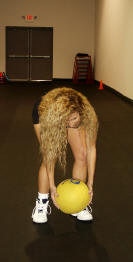 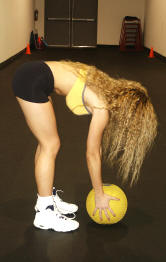 Carrying a Load Carrying a Load
If you must lift, keep the objects close to your body. Avoid twisting
when you are carrying heavy objects. Remember, bend at the knees, not at
the waist.
INCORRECT FORM
CORRECT FORM
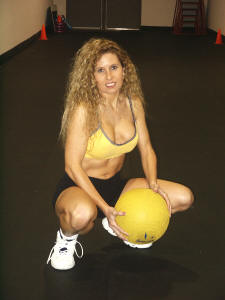 
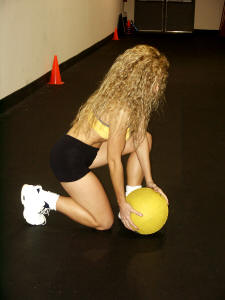 
next
|

